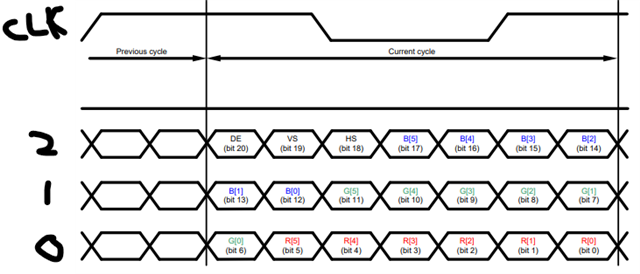Other Parts Discussed in Thread: DS90CF386, DS90UB925Q-Q1
Tool/software:
Dear TI-Team,
we want to convert video data from LVDS to parallel, using an interface to deserialize LVDS.
The CPU support video format "RGB888" and "RGB666".
The CPU supports "LVDS JEIDA" and "LVDS VESA" data mapping (LVDS: 4x Data lanes+ 1xClk lane).
We want to use the video format "RGB666" and "LVDS JEIDA" format.
My questions:
a.) Could we use the part "DS90CF366" (LVDS: 3x Data lanes +1xClk lane),
to convert CPU video data (RGB666 / LVDS JEIDA) to parallel TFT-panel data (RGB666).
b.) Can you suggest an interface part for converting CPU video data (RGB666 / LVDS JEIDA) to parallel TFT-Panel data (RGB666).
Regards




